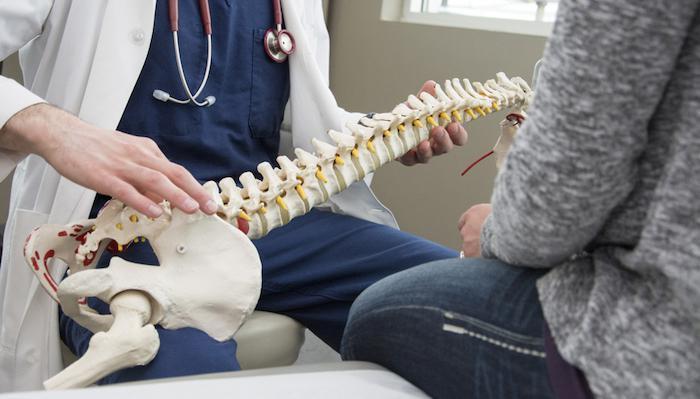As you get older, it’s easy to dismiss your chronic back aches and pains as just part of getting older. But painful symptoms are never normal.
As you age, those uncomfortable symptoms can be a sign of spinal stenosis, an underlying medical problem that we can address with proper medical care.
As many as a half million Americans suffer from spinal stenosis symptoms. As a top-ranked complex spine specialist in Roseville, Minnesota, David Chang, MD-PhD, DABNS, knows the toll it can take on our patients.
If you’ve been diagnosed with spinal stenosis, here’s what you should know about the condition, along with five steps you can take to relieve your painful symptoms.
Spinal stenosis: The basics
Your spine is made up of a series of bones (vertebrae) that have openings in the center. When lined up, these openings create your spinal canal, a channel that forms a pathway for nerves traveling from your brain to the rest of your body.
Typically, the channel is wide enough to provide plenty of room for your nerves. But if you have spinal stenosis, your spinal canal starts to narrow, crowding your nerves and eventually compressing or pinching them.
Since spinal stenosis compresses the nerves as they leave your spine, you can have pain, tingling, numbness, or other symptoms anywhere along the nerve pathway.
Most spinal stenosis is the result of age-related changes in your spine, like arthritis or changes in the spine’s ligaments.
Although any part of your spine can be affected, stenosis usually happens in the neck or lower back — the two most flexible parts of your spine that encounter the most wear-and-tear over the years.
Treating spinal stenosis: Five nonsurgical options
Severe spinal stenosis is often best treated with surgery to reduce pressure on the nerves. But many people with mild to moderate spinal stenosis benefit from nonsurgical options, like the ones we list here.
Anti-inflammatory medication
Over-the-counter nonsteroidal anti-inflammatory medicines help by reducing both pain and inflammation. When drugstore medicines don’t provide enough relief, Dr. Chang may prescribe stronger medicines that offer more anti-inflammatory benefits.
Muscle relaxants
Your spine is surrounded by muscles that help keep your vertebrae aligned and provide strength and flexibility. Tight muscles and muscle spasms tug on your spine, making pain and other symptoms worse.
Prescription muscle relaxants help calm overactive muscles, reducing stress on your spine and providing overall pain relief. Plus, some of these medications help relax you, reducing stress that can make muscle pain worse.
They can also make your drowsy, which is why you shouldn’t plan on driving while their effects are active.
Corticosteroid injections
Corticosteroids have powerful anti-inflammatory properties that make them especially effective in managing spinal stenosis symptoms. Instead of prescribing oral medication, Dr. Chang injects corticosteroids in the area surrounding your spine (the epidural space), delivering the medication directly to the area of your spine that’s causing painful symptoms.
Corticosteroid injections are especially effective for symptoms like pain or tingling that radiate into your legs or arms. The effects of corticosteroid injections may last for months, and they can be repeated up to three times per year.
Nerve blocks
You perceive pain when nerves send pain signals to your brain. Nerve blocks work by actually blocking those signals, preventing the affected nerve from communicating with your brain.
In addition to managing pain, nerve blocks are useful in diagnosing which nerve is responsible for your pain. Dr. Chang uses special techniques to ensure he delivers the nerve block medication precisely to the nerve that’s being pinched or compressed.
Physical therapy
Physical therapy uses gentle exercises and stretches focused on strengthening the affected area of your spine and improving flexibility, so normal activities are more comfortable. Physical therapy is tailored to your lifestyle, your symptoms, and other factors, and it can be used alone or in combination with other therapies.
In addition to on-site activities, your therapist provides at-home exercises to maximize your benefits. They may also recommend lifestyle changes or the use of assistive devices to help you manage your symptoms more effectively.
Find out what’s causing your back pain
Spinal stenosis is a relatively common cause of chronic and progressive back pain among older people, but it can affect younger people, too. Bottom line: If you have any type of back pain, don’t ignore it, or you could develop more serious symptoms or permanent disability.
To learn what’s causing your symptoms and how to relieve them, call 651-219-7322 or book an appointment online with Dr. Chang today.
